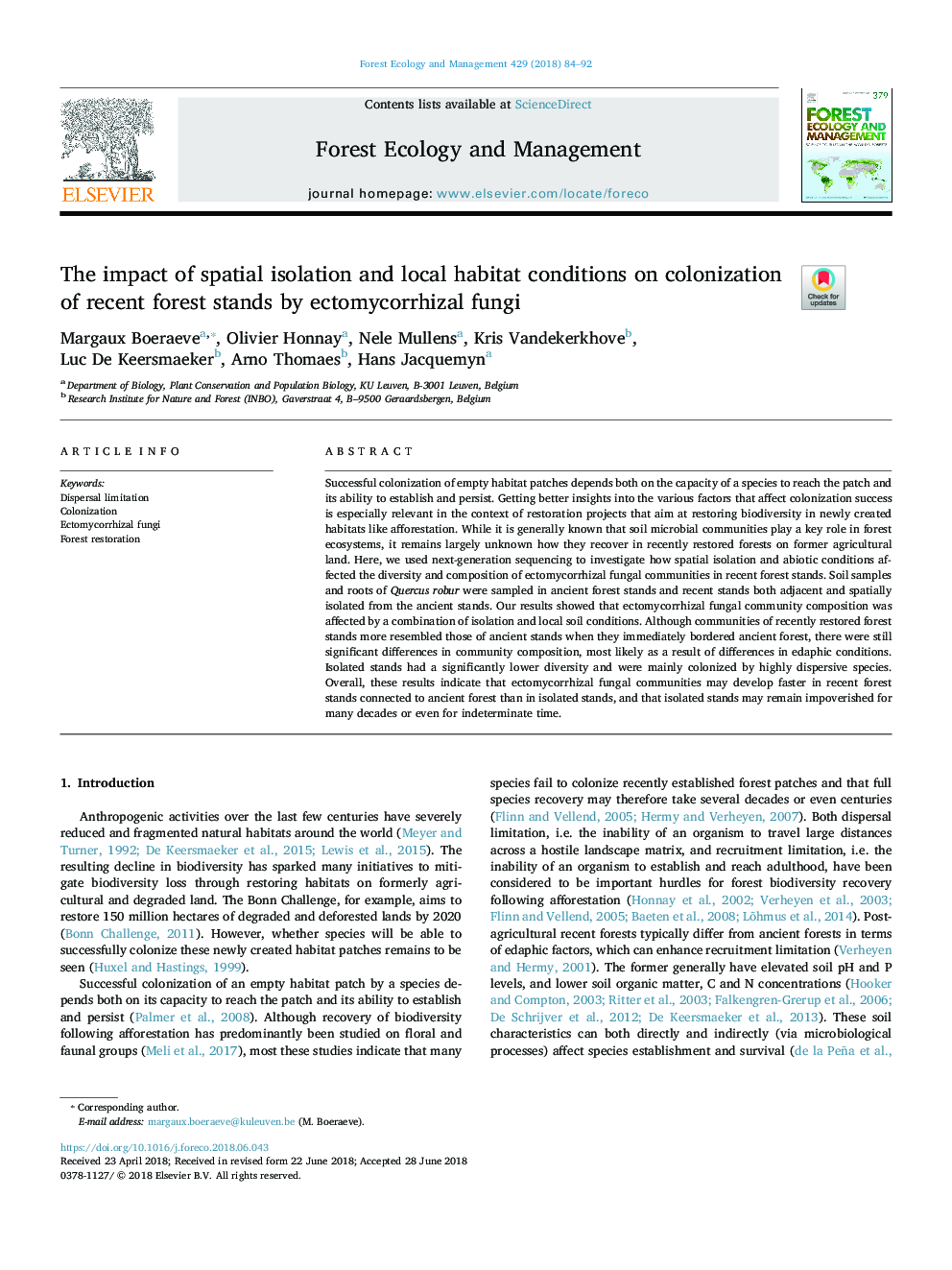| Article ID | Journal | Published Year | Pages | File Type |
|---|---|---|---|---|
| 6541421 | Forest Ecology and Management | 2018 | 9 Pages |
Abstract
Successful colonization of empty habitat patches depends both on the capacity of a species to reach the patch and its ability to establish and persist. Getting better insights into the various factors that affect colonization success is especially relevant in the context of restoration projects that aim at restoring biodiversity in newly created habitats like afforestation. While it is generally known that soil microbial communities play a key role in forest ecosystems, it remains largely unknown how they recover in recently restored forests on former agricultural land. Here, we used next-generation sequencing to investigate how spatial isolation and abiotic conditions affected the diversity and composition of ectomycorrhizal fungal communities in recent forest stands. Soil samples and roots of Quercus robur were sampled in ancient forest stands and recent stands both adjacent and spatially isolated from the ancient stands. Our results showed that ectomycorrhizal fungal community composition was affected by a combination of isolation and local soil conditions. Although communities of recently restored forest stands more resembled those of ancient stands when they immediately bordered ancient forest, there were still significant differences in community composition, most likely as a result of differences in edaphic conditions. Isolated stands had a significantly lower diversity and were mainly colonized by highly dispersive species. Overall, these results indicate that ectomycorrhizal fungal communities may develop faster in recent forest stands connected to ancient forest than in isolated stands, and that isolated stands may remain impoverished for many decades or even for indeterminate time.
Related Topics
Life Sciences
Agricultural and Biological Sciences
Ecology, Evolution, Behavior and Systematics
Authors
Margaux Boeraeve, Olivier Honnay, Nele Mullens, Kris Vandekerkhove, Luc De Keersmaeker, Arno Thomaes, Hans Jacquemyn,
